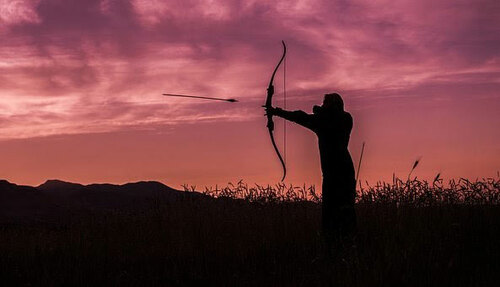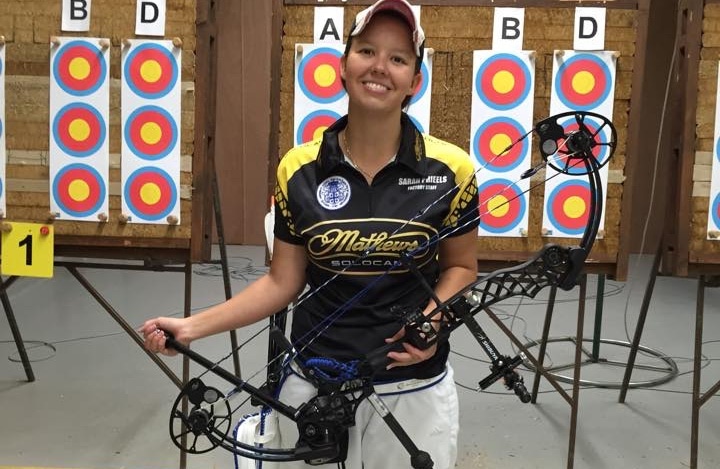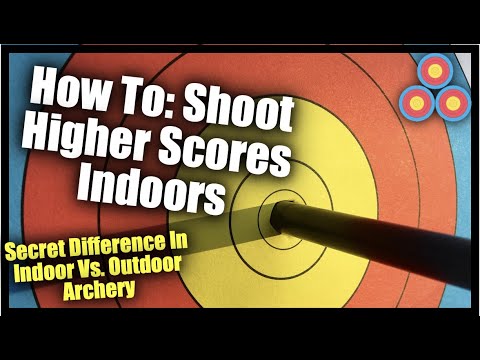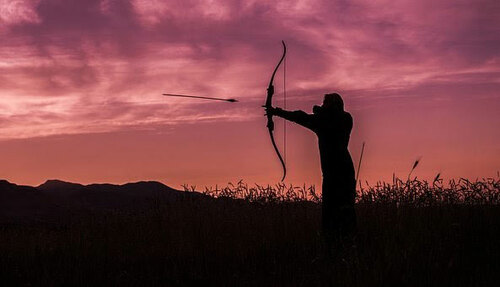
Are you curious about the distinctions between indoor and outdoor archery? Whether you are new to the sport or an experienced archer looking to expand your skills, understanding these differences is essential. In this article, we will explore the key variations between indoor and outdoor archery and discuss how they can impact your performance. From the environment to the equipment used, you will gain valuable insights that will enhance your archery experience. So, let’s dive in and discover what sets these two archery disciplines apart!

Equipment
Bow Types
When it comes to archery, the first piece of equipment that comes to mind is, of course, the bow. In indoor archery, recurve bows are the most commonly used. These bows are usually shorter and lighter, which allows for more maneuverability within indoor shooting ranges. On the other hand, outdoor archery typically sees the use of compound bows. These bows are more powerful and have more advanced mechanisms, making them better suited for longer distances and varying weather conditions.
Arrow Types
The type of arrows used in indoor and outdoor archery also differ. In indoor archery, lightweight arrows with small fletchings are preferred. This is because indoor ranges tend to have a shorter distance, and the reduced air resistance allows for better accuracy. Outdoor archery, on the other hand, requires heavier arrows with larger fletchings. These arrows are better suited for longer distances and can withstand the effects of wind and other environmental factors.
Targets
In indoor archery, the targets are usually set up at a fixed distance, typically around 20 yards. The targets themselves are often smaller and have a smaller bullseye area. Outdoor archery, however, offers a greater variety in target distances. The targets are larger and have a wider bullseye area to accommodate for longer shooting distances. The outdoor targets are also more likely to be placed in natural settings, such as fields or forests, adding a different level of challenge to the sport.
Weather Conditions
Indoor Conditions
One of the advantages of indoor archery is that the weather conditions do not play a significant role. Whether it’s raining, windy, or extremely hot outside, indoor archers are able to practice and compete in a controlled environment. This allows for consistent shooting conditions and ensures that the archers’ focus remains solely on their technique and skill.
Outdoor Conditions
Outdoor archery, on the other hand, is heavily influenced by weather conditions. Wind, in particular, poses a significant challenge to archers. A gust of wind can easily affect the trajectory of an arrow, requiring adjustments in aim and technique. Additionally, temperature and humidity can also affect the performance of both the archer and their equipment. Outdoor archers must be prepared to adapt to these ever-changing weather conditions to maintain accuracy and consistency.
Distance
Indoor Distances
In indoor archery, shooters are typically shooting at a fixed distance of around 20 yards. This allows for more consistent training and competition, as archers can develop a precise technique for shooting at that specific distance. The shorter range also allows for quicker arrow retrieval and a faster pace of shooting.
Outdoor Distances
Outdoor archery offers a wider range of shooting distances. Depending on the category and event, archers may shoot at distances ranging from 30 meters to over 90 meters. This requires a different set of skills compared to shooting at a fixed distance indoors. Outdoor archers must be able to adjust their aim and form based on the varying distances, which adds an extra layer of complexity to the sport.
Lighting
Indoor Lighting
Indoor archery ranges are typically well-lit to ensure optimal visibility for the archers. Adequate lighting helps archers focus on their targets and maintain consistent form. The lighting conditions in indoor ranges are carefully controlled to eliminate glare and shadows, providing archers with a clear view of the target.
Outdoor Lighting
Outdoor archery is naturally influenced by the available sunlight. The direction and intensity of sunlight can create shadows and affect the visibility of the target. Archers must learn to adapt to changing lighting conditions throughout the day, as the position of the sun can vary and cast different shadows. The use of visors or sunglasses can help reduce the impact of the sun on an archer’s focus and aim.

Environmental Factors
Wind
Wind is a significant environmental factor that affects outdoor archery. It can make shooting more challenging by altering the path of the arrow in flight. Archers must learn how to gauge and adjust for wind speed and direction to maintain accuracy. This requires a keen understanding of wind patterns and experience in compensating for its effects on arrow trajectory.
Temperature
Temperature can also impact archery performance, particularly when shooting outdoors. Extreme cold or heat can affect an archer’s grip on the bow, the flexibility of the bowstring, and even the consistency of arrow flight. Archers need to dress appropriately, stay hydrated, and make any necessary adjustments to their equipment to accommodate for the prevailing temperatures.
Humidity
Humidity levels can also influence arrow flight in outdoor archery. Higher humidity levels tend to make the air denser, which can cause arrows to slow down and drop quicker. Conversely, lower humidity can make the air less dense, resulting in faster arrow flight and longer distances. Archers must take humidity into account when shooting outdoors, adjusting their aim and technique accordingly.
Sunlight
Sunlight can affect archery in multiple ways. Firstly, the position of the sun can create shadows that can obscure the target or interfere with an archer’s line of sight. Secondly, the intensity of sunlight can cause glare, making it difficult to see the target clearly. Archers must be aware of these factors and make adjustments to their shooting technique, such as using shade or wearing sunglasses, to ensure optimal visibility and accuracy.
Course Layout
Indoor Course
Indoor archery courses are typically set up in dedicated shooting ranges or gymnasiums. These courses are designed to accommodate the fixed shooting distance and target setup required for indoor archery. The layout of the course is often straightforward, with designated shooting lanes and clear markings for the shooting line and target positions. This simplicity allows for efficient practice and competition.
Outdoor Course
Outdoor archery courses, also known as ranges or fields, offer a more varied and challenging course layout. These courses are set in natural environments, such as forests or fields, and utilize different terrains and obstacles to create a diverse shooting experience. Outdoor courses often have multiple shooting stations at various distances, which adds complexity and requires archers to adapt their technique and aim for each target position.

Competition Format
Indoor Competition
Indoor archery competitions typically follow a strict format. Competitors shoot a fixed number of arrows at a fixed distance, aiming for the center of the target. The scoring is based on the proximity of arrows to the center, with higher points awarded for closer shots. Indoor competitions are often held in controlled environments, ensuring consistent conditions for all participants. The fixed distance and controlled setting allow for fair and accurate comparison of archers’ skills.
Outdoor Competition
Outdoor archery competitions offer more diversity in terms of format and shooting distances. Depending on the event, archers may shoot at various distances and compete in different categories and divisions. Outdoor competitions often involve shooting rounds, where archers move between different targets or distances. The varying conditions and distances in outdoor competitions test an archer’s adaptability and versatility in different shooting scenarios.
Rules and Regulations
Indoor Rules
Indoor archery competitions adhere to specific rules and regulations to ensure fair play and safety. These rules cover various aspects, including equipment specifications, shooting procedures, scoring systems, and safety guidelines. Indoor rules often focus on standardizing the shooting experience, minimizing external influences, and providing a level playing field for all participants.
Outdoor Rules
Outdoor archery competitions also have their own set of rules and regulations, tailored to the unique challenges of shooting in outdoor settings. These rules address factors such as shooting distances, target placements, and procedures for handling variable weather conditions. Outdoor rules prioritize safety, fair competition, and maintaining the integrity of the sport in outdoor environments.

Target Faces
Indoor Target Faces
Indoor archery target faces are typically smaller in size and consist of multiple scoring rings, with the center ring representing the highest score. The center bullseye is usually smaller and requires more precision to hit. The smaller target faces help in developing accuracy and precision at the fixed shooting distance, challenging archers to consistently hit smaller targets under controlled conditions.
Outdoor Target Faces
Outdoor archery target faces are larger and offer a wider range of designs and colors. The target faces are designed to be visible and accommodating for longer distances. The outer rings of the target face have different scoring values, with the center bullseye carrying the highest score. The larger and more diverse outdoor target faces test an archer’s ability to maintain accuracy and consistency over varying distances and shooting scenarios.
Skill Requirements
Indoor Archery Skills
Indoor archery places a strong emphasis on precision, consistency, and focus. Archers must develop a refined shooting technique that allows them to consistently hit the smaller target faces at a fixed distance. Indoor archery also requires mental focus to block out distractions and maintain concentration. It is a sport that rewards discipline, control, and the ability to replicate the same shot with precision, shot after shot.
Outdoor Archery Skills
Outdoor archery demands more versatility and adaptability from archers. The varying shooting distances, weather conditions, and terrain require archers to adjust their aim, shooting technique, and mental approach accordingly. Outdoor archers must also develop the ability to read environmental factors such as wind, temperature, and lighting to make necessary adjustments for optimal accuracy. Outdoor archery hones an archer’s ability to adapt and perform consistently under different and sometimes challenging circumstances.
In conclusion, the key differences between indoor and outdoor archery lie in the equipment used, the influence of weather conditions, the shooting distances, lighting conditions, and the overall skill requirements. Whether it’s the controlled environment and fixed distance of indoor archery or the dynamic challenges posed by outdoor shooting, both variations of the sport offer unique experiences and opportunities for archers to showcase their skills. So whether you prefer the precision and focus of indoor archery or the adaptability and versatility of outdoor shooting, archery is a captivating sport that rewards dedication, skill, and a love for the art of the bow and arrow.
